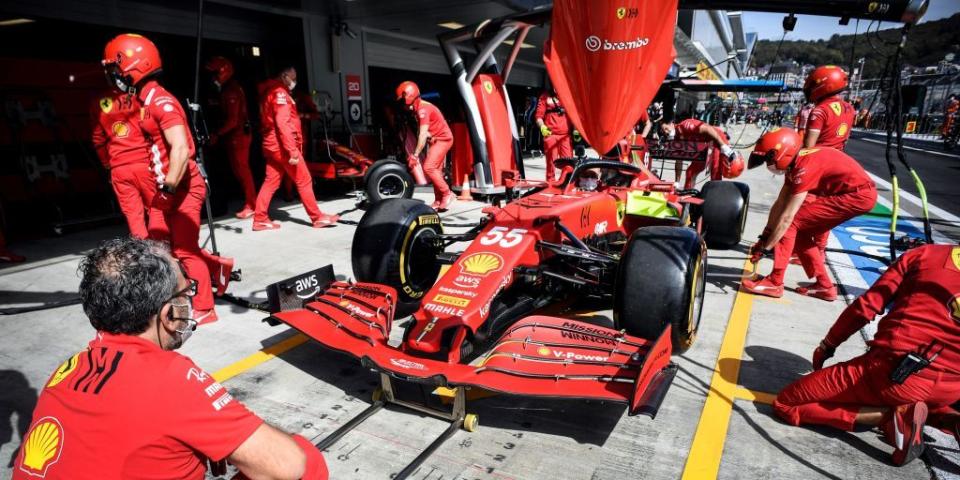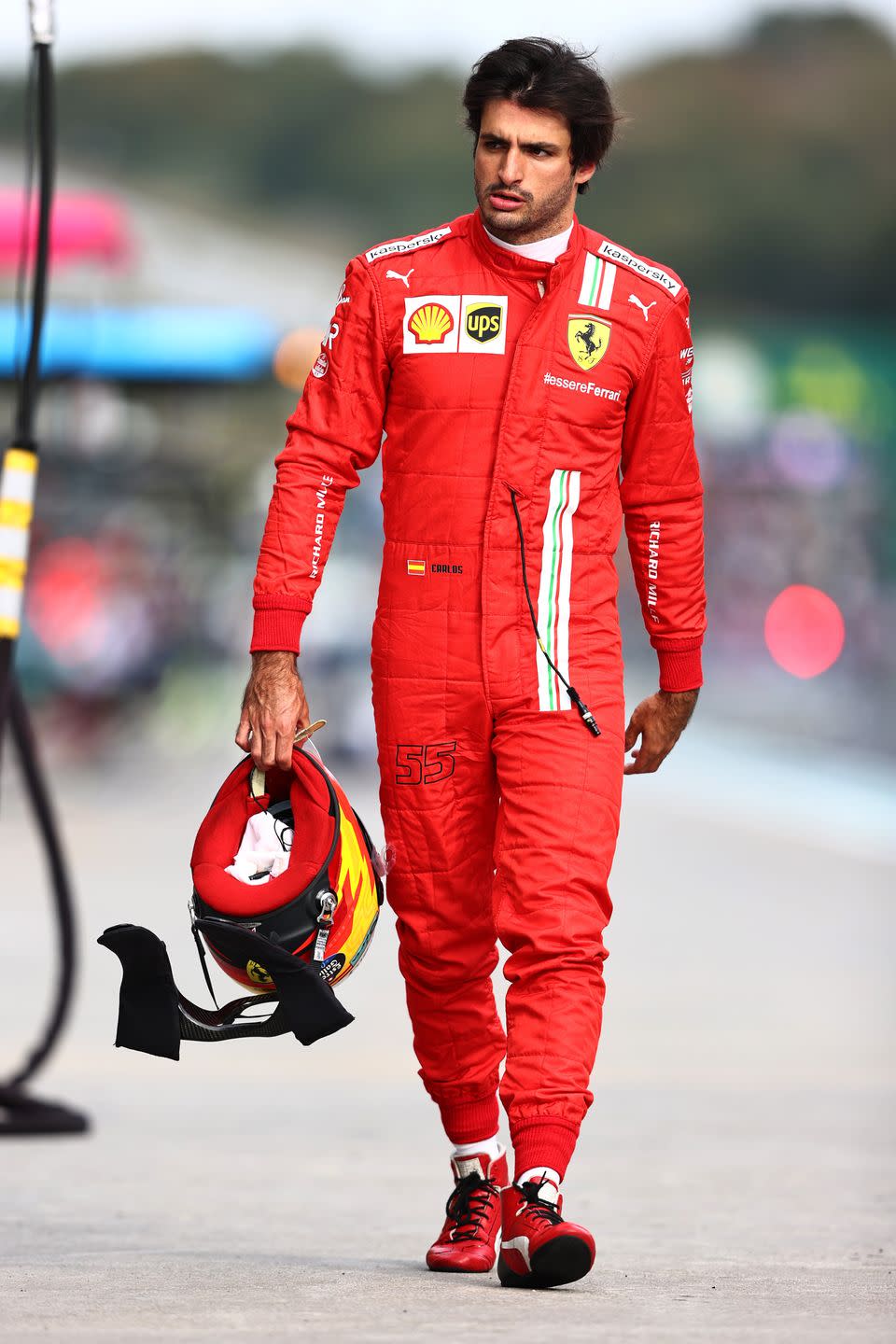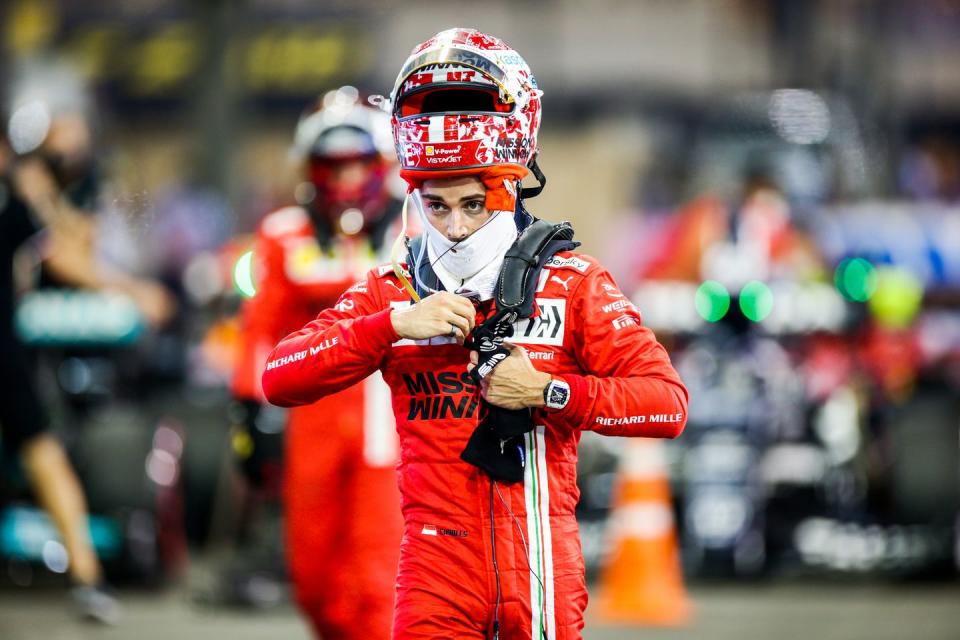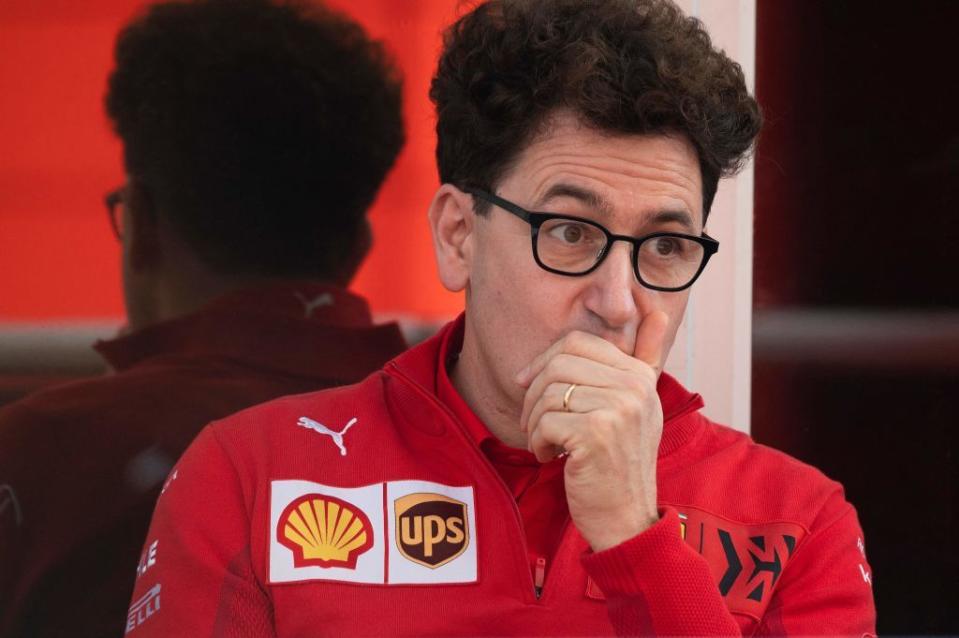Inside Ferrari's Master Plan to Return to the Top in Formula 1

In the aftermath of its 2020 campaign, its worst in four decades, 2021 was a stride in the right direction for Ferrari.
In 2021, Ferrari finished third in the Formula 1 Constructors' Championship with 323.5 points, meeting several of its preseason targets while laying long-term foundations.
Ferrari, with its driver lineup, history and resources, is surely best-placed to challenge for its first title since 2008.
Ferrari is Formula 1’s most successful team with 16 world titles and 238 victories.
In that context, third in the 2021 Constructors’ Championship with 323.5 points, with a modest five podiums, is underwhelming. Yet in the aftermath of its 2020 campaign, its worst in four decades, 2021 was a stride in the right direction.
In 2020, Ferrari slumped to sixth, scored only 131 points, with the finger pointed at its weak power unit, following its private settlement with the FIA over alleged but never proven performance discrepancies of its 2019 engine.
In 2021, Ferrari met several of its preseason targets while laying long-term foundations in a transitional year. It did not win a race, extending its drought to 45 races—its longest since the early-mid 1990s—but there were tangible gains.

Charles Leclerc scored two poles and a podium while newly-recruited Carlos Sainz, who replaced four-time champion Sebastian Vettel, fitted the team like a glove, taking four podiums, finishing each race. A closely contested season finished 164.5 to 159 in Sainz’s favor, though Leclerc was 14-6 up in races where both classified.
“In 2020, the average gap in qualifying was 1.3 seconds per lap, to Mercedes,” said Ferrari team principal Mattia Binotto. “It has become an average of 0.6 second in 2021. We are fully aware that we have not closed the gap to the best, and 0.6 is clearly a big number, but being realistic it was impossible to close the gap (during the off-season). If we look at the race itself, it was 1.1 second (a lap) to Mercedes in 2020, it has become 0.8, so still a significant gap.”
But progress nonetheless, particularly given Ferrari’s SF21 car was not upgraded, with resources instead put into the 2022 program.
Knowing 2021 was a year of transition, in which chassis and engine gains were limited, Ferrari pushed to continue the restructuring and organizational changes it began in late 2020.

“If I look at our delta average of the season to McLaren, it is only 0.05 second between us and McLaren (during qualifying), but if at the end we have scored almost 50 points more than them it is because we have been more solid than them,” said Binotto.
“We didn’t finish the race only twice—Charles, in Monte Carlo and Hungary (due to accident damage). Only McLaren did as good as we did. Last year, it was six (retirements). In the number of races finished in the top 10, we finished 38 times with two drivers, which is the best of all the teams. Our average pit stop time in 2021 was 2.55 seconds instead of 2.70 seconds of 2020, and 73% of our pit stops this year were below three seconds, while it was 38% in 2020. So again these numbers show encouraging progress.
"We are not yet the best, but I think that certainly as a team in terms of trying to improve in all the areas it has been achieved in these numbers.”
Binotto, who has been Team Principal for three years, has gradually enacted cultural changes, most prominently to “take mistakes as an opportunity” to learn, and that “there is no blame, no finger-pointing” in contrast to previous eras.
“We have common responsibility altogether for the team, which is reaching a goal together, it is not a sum of individuals, it is our responsibility as a team,” he says.
Part of Ferrari’s capture of third place was facilitated by the introduction of a new hybrid system. It was due for 2022 but, after deciding to accelerate its introduction for late 2021, it was ready in September, giving it an eight-race trial run. The power unit has been a key weakness ever since that controversial private settlement in early 2020 and progress in the area is pivotal for Ferrari’s long-term prospects, given the impending freeze through 2024.
“It was a significant change, not only in terms of design, but its production and usage,” said Binotto. “The development of the hybrid PU was important for us; we made a big step compared to what we had, if we consider last year the PU was a big disadvantage in terms of the gap of power, which was very obvious in the straight line. Still there is a gap to the best, but the gap is reducing, and if I look at what we have done with a view to 2022 I’m sure we will do further improvements.

“The rest (of the power unit), especially on the internal combustion engine, is significantly different (in 2022). We've got a new fuel (per the regulations), which is the 10% ethanol, which changed a lot the combustion. Just considering that different fuel we are losing more or less 20 horsepower, which means the combustion itself is quite changed. So there were a lot of opportunities in development on the power unit and we changed it quite a lot, especially in the design of the combustion itself.”
The power unit, and its structure, of course runs in parallel with the design of the rest of the car. Next year’s as-yet-unnamed car, which will be presented in mid-February, will be radically different from the SF21 and its predecessors given the overhaul in regulations.
“On the chassis, what can we innovate," asks Binnotto. "I think that the way we approach the exercise was really open-minded and when looking at the car concept, what was possible or not—which is not only the external shapes but whatever you could have done under the bodywork in terms of layout, in terms of suspension design, in terms of the architecture, including as well the power architecture—I think that the team made significant innovations and the overall design that we are now formalizing is quite different to the 2021 project.”
Ferrari is continuing with Leclerc and Sainz for 2022. Leclerc, who was developed through Ferrari’s academy, is contracted through 2024 while discussions are set to open with Sainz during the winter to tie him down beyond 2022. Binotto regularly lauds the duo as Formula 1’s best driver lineup and they complement each other well.
Ferrari also has protégé Mick Schumacher at Haas for a second season; from 2022 he will share reserve driver duties with Antonio Giovinazzi, the former Alfa Romeo racer who has been part of Ferrari since 2017. Giovinazzi will be reserve at 12 events, and Schumacher 11.
Ferrari is not the only team regarding 2022 as an opportunity but, having placed third, and with its driver lineup, history and resources—its recently constructed driver-in-loop simulator will be fully ready in early 2022—it is surely best-placed to challenge for its first title since 2008.
Binotto, though, is continuing to adopt a cautious but progressive tone.
“The 2022 car project is going according to plan,” says Binotto. “We know we have no references to the others, that’s the most difficult one, we have no rumors on what’s going to the others, but important to me to know we are reaching our objectives and it is progressing to plan, we know that the change in regulations is a big discontinuity (from the past) and also an opportunity.
“What will be important for us next year is to keep on growing. And it is to further reduce the gap to the competitors. The new regulations are a clear opportunity. The hope is to be competitive and for me to be competitive is to be in the position of winning races. Would that mean that we can fight for a championship?
"If I look at today, the gap is still big. But as Ferrari, it’s part of our DNA. What is important is to be capable of fighting at least in some races for pole and for the win. That is the simple consequence of continuous growing and improvement. I would be disappointed if we have not improved to this year.”

 Yahoo Autos
Yahoo Autos 